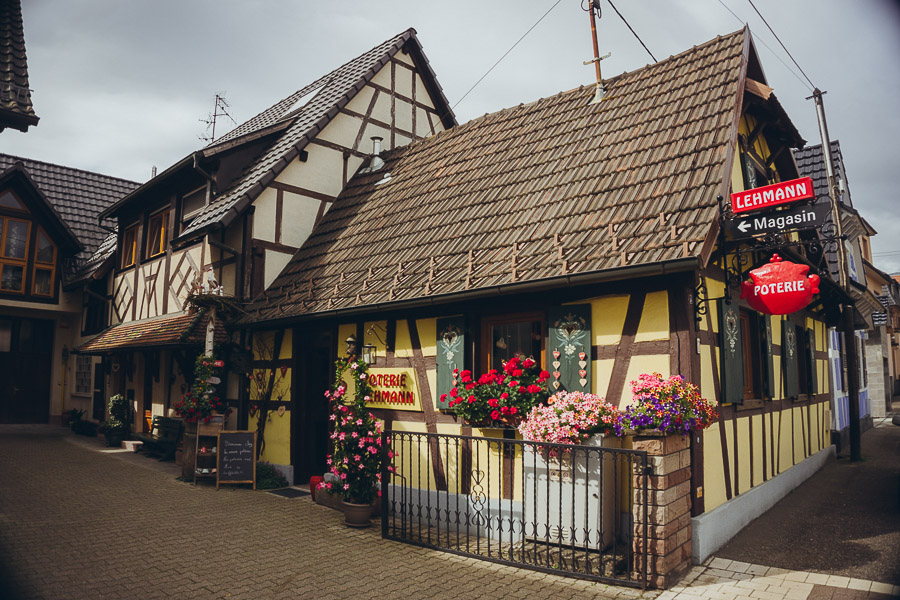We returned to Europe and almost immediately set about procuring raw materials for our own studio. However, we were also looking for inspiration, ideas and even tools and/or equipment. Yannick’s opa tipped us off to a historical pottery village in nearby Alsace.
Oblivious of what to expect we arrived in Soufflenheim to discover quite literally an entire village dedicated to pottery: the earliest reference of its pottery trade being made in 1147. Soufflenheim is a historical pottery town and now one of only two remaining such towns where traditional Alsatian pottery is produced. The high street was lined either side by potteries, each slightly different but all displaying a beautiful range of colourful traditional crockery: clearly the local specialty.
We began to walk from pottery to pottery admiring the wares and looking at studio details. At one pottery we gingerly made our way through their shop into the atelier and were relieved to be warmly welcomed. We were given a full tour with a detailed description of the production process. Almost all the potteries of Soufflenheim use industrial mould making techniques.
The atelier, albeit being a wonderfully practical space, had almost no tools or equipment that could be of use to our handmade pottery needs. All except the ware carts. Coincidently the atelier was upgrading their production equipment to the latest technological developments and no longer needed their numerous ware carts. They were happy to sell us their surplus and we were happy to have these excellent second hand shelves.
Gas (train) kilns have long replaced the traditional wood kilns of Soufflenheim. However, the clay used is still mined locally from the nearby Haguenau forest. We were explained that the mine is private and collectively owned by approximately 10 potteries. Every few years they reopen the mine and extract a few tons of clay per pottery for the coming years before closing it again. Generously they threw in a few kilos of their local clay into our cart bargain. We are curious to test this white-bodied clay for more details.
We left the village with ware carts and clay in hand: having arrived with absolutely no expectations. The only thing left to do was to delight in a traditional Alsatian meal cooked in locally made crockery.










Oh! I will like to visit this historical and beautiful village and, to look all these potters.